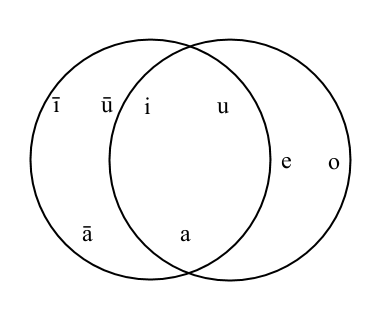
The writing systems of some languages are based on the phonemic principle of having one letter (or combination of letters) per phoneme and vice-versa. Ideally, speakers can correctly write whatever they can say, and can correctly read anything that is written. In practice, this ideal is more nearly achieved in some languages than in others. In the writing systems of many languages, different spellings can be used for the same phoneme (e.g. English: "rude" /ɹu:d/ and "food" /fu:d/ have the same medial vowel sound but that sound is represented differently in each word), and the same letter (or combination of letters) can represent different phonemes. For instance, the letter combination "th" is used in English to represent /θ/ in "thin" /θɪn/ and /ð/ in "this" /ðɪs/, or the "c" of European Spanish represents /θ/ in "gracias" ['gra.θi.əs] (thank you) or /k/ in "cabo" ['ka.bo] (cape). In order to avoid confusion based on orthography, phonologists represent sounds by writing them in a phonetic alphabet which ascribes rigorous characteristics to each symbol. This system of writing is called the International Phonetic Alaphabet, it is used universally amongst people who require accurate descriptions of phonetic material, and is often referred to as the IPA.

IPA symbols are sometimes written between two slashes: " / / " (but without the quotes) as a way to denote what is minimally distinctive in a particular language (phonemes). On the other hand, a representation of the actual sounds produced by a speaker is enclosed by square brackets: " [ ] " (again, without quotes). This notation is used to convey a transcription of what sounds were produced in a particular instance of speech. For example, our English grammar will include a phoneme /p/ that will be realized as [p] or [pʰ] in a particular act of speech. Remember, whether a particular speaker produces [p] or [pʰ] is unimportant to meaning in the case of English (a listener only has to distinguish /p/ from /d/ or any other English phoneme which is minimally distinctive). nonetheless, the case of aspirated [p] could be interesting to linguists for many other reasons.



0 comments:
Post a Comment